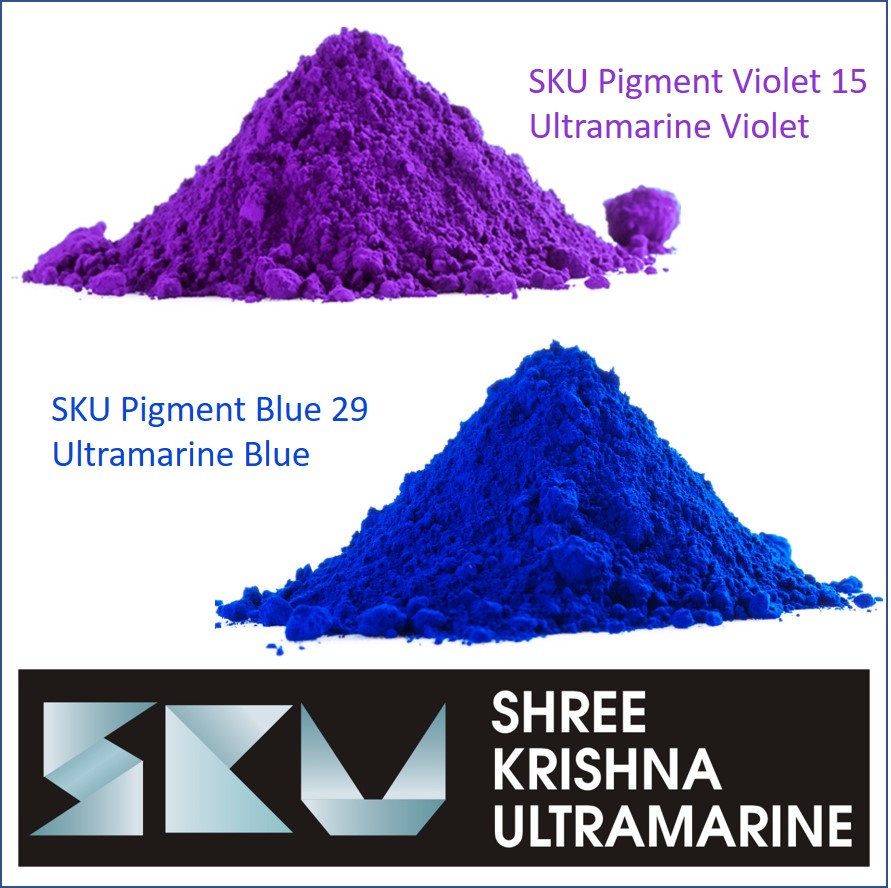Why Ultramarine Pigments Remain the World’s Most Trusted Blue

For centuries, color has shaped art, design, and industry. Among the most iconic hues, Ultramarine stands out for its vivid tones. Today, companies like SKU Pigments produce high-quality Ultramarine pigments, including Ultramarine Blue, Ultramarine Violet, Pigment Blue 29, and Pigment Violet. From industrial coatings and packaging, Ultramarine has become the backbone of modern blue pigments.
Tracing Ultramarine from Lapis Lazuli to Industry
The name Ultramarine comes from the Latin “ultra mare,” meaning “beyond the sea,” a reference to lapis lazuli originally imported from Afghanistan. For centuries, it was a rare treasure, used by Renaissance masters to depict divine subjects. It symbolized purity and heaven.
Modern chemistry made it possible to produce artificially Ultramarine pigments, bringing the once-exclusive shade into everyday use. This breakthrough turned a exclusive pigment into a widely available solution for countless sectors.
The Versatility of Pigment Blue 29
Ultramarine Blue pigments—the synthetic form of Pigment Blue 29—are industry favorites. Known for their lasting vibrancy, they are safe, eco-friendly, and non-toxic. They are used in:
• Decorative finishes for durability and brilliance.
• Automotive and packaging industries, thanks to chemical safety.
• Inks and printing, where sharpness is vital.
• Personal care, given their non-toxic nature.
This balance of economy and brilliance keeps Ultramarine Blue among the top pigments.
Ultramarine Violet and Pigment Violet
Ultramarine Violet offers softer tones that appeal in specialty coatings. Pigment Violet derived from Ultramarine is eco-safe, making it ideal for sensitive products.
Its muted shade enhances fine art, while ensuring durability without chemical breakdown.
Industrial Uses of Ultramarine Blue
Pigment Blue—particularly Ultramarine Blue pigments—remains a trusted industrial choice. It offers eco-friendly performance for:
• Automotive paints with resistance to fading.
• Packaging, ensuring stable shades.
• Construction materials, adding strength and aesthetics.
This wide applicability ensures Pigment Blue’s staying power.
The Benefits of Blue and Violet Pigments
• Non-Toxic & Safe: Suitable for sensitive products.
• Heat & Light Resistant: Reliable even in high-heat industries.
• Eco-Friendly: Manufactured with sustainability.
• Cost-Effective: Economical mass use.
• Versatile: Applicable everywhere color matters.
Ultramarine in Modern Industries
1. Paints & Coatings: Decorative finishes.
2. Plastics & Rubber: Stable in polymers.
3. Cosmetics: Luxury formulations.
4. Construction: Tiles and cement.
5. Printing & Inks: Sharp colors for publishing.
SKU Pigments: Global Ultramarine Experts
SKU Pigments leads the market, offering innovation in Ultramarine pigments. Their product portfolio includes:
• Pigment Blue 29 for industrial-scale use.
• Ultramarine Violet and Pigment Violet for luxury tones.
• Custom shades for specialized markets.
Their reputation is built on consistent quality and eco-friendly production.
Conclusion
From a rare treasure to Ultramarine Violet the backbone of blue pigments, Ultramarine has remained relevant for centuries. Whether it’s the classic brilliance of Ultramarine Blue, the subtle elegance of Ultramarine Violet, or the dependability of Pigment Blue 29, Ultramarine pigments remain unrivaled.
With SKU Pigments as a trusted partner, industries achieve innovation with color. As demand for non-toxic pigments rises, Ultramarine will lead in global markets.
Common Queries About Ultramarine
1. What is Ultramarine?
A vibrant pigment from lapis lazuli, now produced synthetically.
2. What is Pigment Blue 29?
The standard code for Ultramarine in industries.
3. Where is Ultramarine Violet used?
In fine arts and specialty industries.
4. Are Ultramarine pigments safe?
Yes, non-toxic and eco-friendly.
5. Why choose SKU Pigments?
Leaders in Ultramarine innovation.